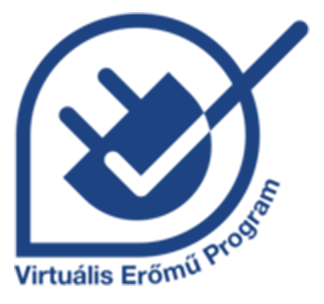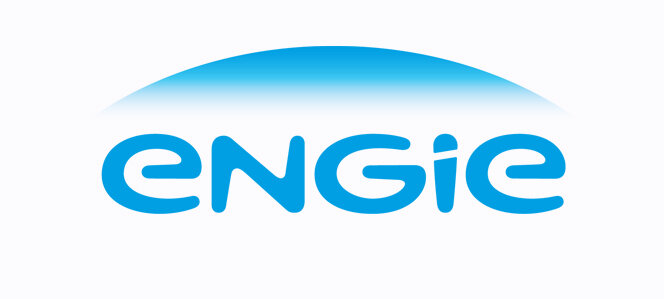Energy efficiency investments at Aquatim
The contribution to the powerplant: 228,92 kWe
Aquatim ensures the provision of water supply and wastewater collection services in Timișoara and throughout the Timiș County, Romania. Our mission is to provide quality water and sewerage services, without harming the natural resources, the environment, the human health and safety. The main activities of the company are: water collection, treatment and supply (NACE code 3600) and Sewerage (NACE code 3700).
The company has been a regional operator since 2010 and the area of supply covers 124 localities in the Timis County. The operation throughout the county is coordinated by its 5 subsidiaries from Buziaș, Deta, Făget, Jimbolia and Sânnicolau Mare. The aforesaid subsidiaries cover most of the area of supply. The provision of services in several localities near Timișoara is managed by the company’s head departments overseeing the operation in the city. At 31.12.2018 Aquatim had 935 employees. The company has implemented, since 2005, a quality, environment, health and occupational safety integrated management system, according to the provisions of ISO 9001, ISO 14001 and OHSAS 18001 specifications.
Aquatim is a company that has continuously developed to match the growing demand of the city and the county. The water supply and wastewater collection systems from the capital city of the Banat region have extended each year. Over the years, the company has invested in smart process instrumentation systems and energy saving technologies. As a result, at present over 80% of the processes in the water treatment plants in Timișoara are automatically monitored and controlled.
In Timisoara, the drinking water comes from surface and ground sources and the treatment technologies are therefore various. The inhabitants of Timișoara get two thirds of their tap water from the Bega River and one third from deep and medium-depth drills. The water is treated in the Bega, Urseni and Ronaţ Treatment Plants. All plants are equipped with modern control systems, 80% of the process instrumentation has automatic control.
In 2018, the company operates:
- 28 drinking water treatment plants;
- 2,000 km supply network;
- 23,900,000 m3 invoiced water amount;
- 110 l/day, domestic per capita consumption, in Timișoara;
- 0.33 kWh/m3 specific energy consumption for all drinking water treatment.
The first Waste Water Treatment Plant in Timișoara was commissioned in 1912. A fully rehabilitated plant was completed in 2011. The upgrading works amounted to 31 million Euros and were financed through the European Union ISPA programme. The present technology includes a biological treatment phase with a nitrification-denitrification process and the chemical treatment for the removal of phosphor. The Wastewater Treatment Plants from Buziaș, Deta, Ciacova, Sânnicolau Mare, Făget and Jimbolia are also new and use advanced treatment in their operation to remove nitrogene and phosphor compounds and ensure an effluent of adequate quality. Additionaly, in the small localities, Aquatim operates 15 modular treatment plants sized and tailored to the community needs.
In 2018, the company operates:
- 22 wastewater treatment plants;
- 1,110 km sewerage pipes;
- 47,600,000 m3 processed wastewater;
- 0.25 kwh/m3 specific energy consumption for the all wastewater treatment.
Before 2002, in Timisoara, the water pressure in the distribution system was maintained with a pumping stations existing in each plant. There were no provision and no clearing tanks, the consumption variations being solved by starting, stopping some pumps at the pumping stations or by partially closing the discharge valves. This mode of operation leads to large variations in system pressure and generates high energy consumption. With the decrease in water demand, these deficiencies became more pronounced.
Energy efficienty investments – Command and Control System for Water Distribution
In 2002, a Command and Control System for Water Distribution (SCC-distribution), was put into operation by using frequency converters each with a power of 1,150 kVA. The water distribution group at the Bega Water Treatment Plant in Timisoara consists of two Worthington pumps with Q = 5,000 m3/h, P = 1,000 kW, n = 950 rot/min. Thus, the Worthington pumps were equipped with static frequency converter, ensuring at all times the required flow and pressure by increasing or reducing the rotor speed (Picture 1).

The pressure converter is regulated by a pressure sensor mounted on Treboniu Laurean Street, the most unfavourable pressure point in the city. The control for reducing or increasing the rotor speed is given by the variation of pressure against the reference value, pressure taken from the pressure monitoring system. The SCC-distribution also controls and controls the opening and closing of the valves on the suction and discharge lines. The following quantities are monitored online: the water level in the storage tanks, the pumped flow, the pressure in the discharge, the pressure at the reference point, the absorbed power, the state parameters of the pumps, faults etc. The investment proved to be profitable, the repayment was made in one year.
The main advantages obtained from achieving SCC-distribution:
- maintaining a constant pressure in the distribution network;
- reducing the specific consumption of electricity on the Bega Plant by 40% respectively from 0.27 kWh/m3 to 0.16 kWh/m3 or if we refer strictly to distribution, the specific electricity consumption decreased to 0.09 kWh/m3;
- reducing the specific consumption of electricity at the other pumping stations by 10% by changing the operating hours and operating at optimum flow and efficiency parameters;
- reduction of shocks in the system generated by the repeated start / stop of the pumps and consequently the reduction of the number of failures on the pipelines;
- reducing water losses by maintaining a constant pressure at the minimum level established.
In 2007, frequency converters were also purchased for distribution pumps from Water treatment Plant Urseni reducing the specific consumption of electricity on distribution by 37% respectively from 0.19 kWh / m3 to 0.12 kWh / m3.
In conclusion, by installing these frequency converters, Aquatim saved, for distribution only, approximately 2.7 million kWh per year.
Renewable resources investments
In 2012, the company installed, on the roof of its main building in Timișoara, a photovoltaic power plant of 3.92 kW, with 8 solar panels, for the production of electricity. The energy produced by the power plant on a sunny summer day is sufficient, for example, for the 60-hour operation of 60 computers. The annual output of the plant is about 2,000 kWh and the resulting energy is used for the building consumption.


Other measures that the company has taken to reduce energy consumption:
- changing the lamps with mercury vapours with LED lamps which led to a 15% reduction in energy consumption on the interior lighting;
- change pumps that do not work at the optimum point of efficiency with others optimized according to the intake and pressure of drinking water;
- analysis of the functioning of the automatic control systems and the possibility of the sequential operation to avoid the water treatment at small flows;
- the proper setting of the parameters of the pressure regulators.
At this moment, Aquatim has a major investment project in water infrastructure in Timis County. This project will ensure the sustainable development of water supply and sewerage services. The name of the project is “The regional project for the development of the water and wastewater infrastructure in Timis County during 2014-2020. “
The project includes environmental infrastructure works, in amount of 180 mil. Euro, out of which 135.6 mil. Euro grant from the European Union, 20.7 mil. Euro Government funds, 3.2 mil. Euro from the local authorities and 20.5 mil. Euro, Aquatim co-financing. The city of Timisoara will benefit from investments of 51 mil. Euro from this project. The main physical indicators of the regional project are presented in the next paragraph.

All investments included in the project use state-of-the-art technologies in order to maximize energy efficiency.
Total energy savings- contributed to the VPPP:
Renewable production: 3,92 kW
Water treatment: frequency converters: 2,7 million kWh
PVPPP= QVE x η / τCS
Where:
PVPPP – Energy Saving accounted in the Virtual Power plant
QVE – The full energy saving, meaning the basis of the calculations
η – average powerplant efficiency
τCS – annual peak hours of the power plant
The contribution to the powerplant is: 225 kWp + 3,92 renewable: 228,92 kWe



